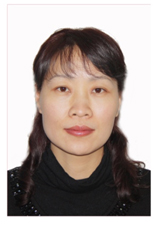Effect of Sintering Temperature on Structure and Properties of Powder Metallurgy Fe-Cu-C Alloy under Industrial Condition

摘 要
在实际工业生产条件下采用粉末冶金技术制备Fe-Cu-C合金,研究了烧结温度(1 060~1 160 ℃)对其密度、显微组织、物相组成、力学性能的影响。结果表明:随着烧结温度的升高,合金的密度先增大后降低,并在1 140 ℃时达到最大值(7.02 g·cm-3);随着烧结温度的升高,合金组织中颗粒的球化程度提高,孔隙的尺寸减小、数量降低,显微组织趋于稳定,铜相衍射峰消失,Fe4Cu3相衍射峰出现;合金的抗拉强度、硬度随烧结温度的变化趋势与密度的基本相同,且均在1 140 ℃时达到最大值,分别为460 MPa,185 HRB,拉伸断口均主要呈脆性断裂特征;工业生产条件下制备的合金的力学性能指标基本与在实验室条件下制备的相吻合。
 烧结温度
烧结温度  粉末冶金
粉末冶金  显微组织
显微组织  性能
性能  Fe-Cu-C alloy
Fe-Cu-C alloy  sintering temperature
sintering temperature  powder metallurgy
powder metallurgy  microstructure
microstructure  property
property 
Abstract
Fe-Cu-C alloy was prepared by powder metallurgy technology under practical industrial condition, and the effect of sintering temperature (1 060-1 160℃) on density, microstructure, phase composition and mechanical properties of the alloy was studied. The results show that with the increase of sintering temperature, the density of the alloy increased first and then decreased, and reached the maximum value of 7.02 g·cm-3 at 1 140℃. With the increase of sintering temperature, the spherification degree of particles in structure of the alloy increased, and the mount and size of pores both decreased; the microstructure tended to be stable; the diffraction peak of copper phase disappeared, while the Fe4Cu3 phase appeared. The tensile strength and hardness had the same trend with sintering temperature as that of density, and both reached the maximum values of 460 MPa and 185 HRB at 1 140℃, respectively; all tensile fractures were mainly characterized by brittle fracture. The mechanical property indexes of the prepared alloy indexes industrial condition were almost the same with those under laboratory condition.
中图分类号 TF124 DOI 10.11973/jxgccl202001012
所属栏目 材料性能及应用
基金项目 甘肃省科技厅科技支撑计划项目(1604GKCE016);天水师范学院中青年教师科研项目(YB-2018-07)
收稿日期 2018/12/27
修改稿日期 2019/11/26
网络出版日期
作者单位点击查看
备注罗海玉(1970-),男,甘肃天水人,教授,硕士
引用该论文: LUO Haiyu,LIU Bo,HUANG Zhihong,YANG Xiaokang. Effect of Sintering Temperature on Structure and Properties of Powder Metallurgy Fe-Cu-C Alloy under Industrial Condition[J]. Materials for mechancial engineering, 2020, 44(1): 68~73
罗海玉,刘博,黄志鸿,杨小康. 工业生产条件下烧结温度对粉末冶金Fe-Cu-C合金组织和性能的影响[J]. 机械工程材料, 2020, 44(1): 68~73
共有人对该论文发表了看法,其中:
人认为该论文很差
人认为该论文较差
人认为该论文一般
人认为该论文较好
人认为该论文很好






参考文献
【1】黄伯云,易健宏.现代粉末冶金材料和技术发展现状(一)[J].上海金属, 2007, 29(3):1-7.
【2】张云鹤,李庚,苗孟河,等.粉末冶金法碳纳米管增强镁基复合材料的微观组织及力学性能[J].复合材料学报,2013,30(增刊1):102-106.
【3】韩风麟.高密度粉末冶金汽车零件生产工艺[M].北京:化学工业出版社,2013:5.
【4】FALLEUR G, SHAH S, HANEJKO F, et al. Production of high density PM automotive components utilizing advanced warm die compaction technology[J]. Powder Metallurgy Technology, 2017, 69(5):18-23.
【5】BARLA N A. Effect of nickel addition on mechanical properties of powder forged Fe-Cu-C[C]//IOP Conference Series:Materials Science and Engineering.[S.l.]:IOP Publishing, 2018, 330(1):012039.
【6】柏琳娜,刘福平,王邃,等.Fe-C-Cu粉末锻造汽车发动机连杆的组织与力学性能[J].金属学报,2016,52(1):41-50.
【7】杨芳, 隋延力, 郭志猛, 等. 铁粉表面硫化处理制备高密度Fe-Cu-C合金[J]. 工程科学学报, 2017, 39(2):232-237.
【8】SHARMA S M, ANAND A. Effect of speed on the tribological behavior of Fe-Cu-C based self lubricating composite[J]. Transactions of the Indian Institute of Metals, 2018, 71(4):883-891.
【9】曾海卒, 李志友, 张雷,等. Mn含量对粉末冶金铁铜碳低合金钢组织与力学性能的影响[J]. 粉末冶金材料科学与工程, 2016, 21(4):658-664.
【10】LI F, YI J, ECKERT J. Optimization of the hot forging processing parameters for powder metallurgy Fe-Cu-C connecting rods based on finite element simulation[J]. Metallurgical & Materials Transactions A, 2017, 48(12):6027-6037.
【11】陆宇衡,肖志瑜,陈露,等.Fe-Cu-Mn-C合金的性能与烧结行为[J].粉末冶金材料科学程,2014,19(5):707-714.
【12】王昊. 粉末冶金制备Fe-Cu复合材料及其性能研究[D].秦皇岛:燕山大学,2016.
【13】CHO Y J, LEE T S, LEE W, et al. Preparation and characterization of iron matrix syntactic foams with glass microspheres via powder metallurgy[J]. Metals and Materials International, 2019, 25(3):794-804.
【14】党文龙,刘祥庆,汪礼敏,等.碳含量对Fe-Cu-C扩散预合金粉末烧结性能的影响[J].粉末冶金技术,2013,31(2):83-88.
【15】王才德, 汪建昌. Fe-Cu粉末压坯烧结膨胀机理[J]. 粉末冶金材料科学与工程, 1996(1):25-29.
【16】朱远志,尹志民,李学谦.一种烧结铁基合金Fe-Cr-Mo-Ni-Co-C的热致密化过程[J].中南大学学报(自然科学版), 2006(3):455-460.
【17】杜丕国. 颗粒配比对Fe-Cu-C烧结件组织和性能影响的研究[D].长春:长春工业大学,2016.
【18】SAMAL S, MITRA S K. Influence of grain shape, size, and grain boundary diffusion on high-temperature oxidation of pure metal Fe, Cu, and Zn[J]. Metallurgical & Materials Transactions A, 2015, 46(8):1-9.
【19】KHARANZHEVSKIY E V. Separation in liquid and the formation of supersaturated solid solutions in Fe-Cu alloys upon rapid laser melting[J]. Physics of Metals and Metallography, 2016, 117(9):889-895.
【20】彭元东,吴海明,易健宏,等.C含量对Fe-Cu-C合金性能的影响[J].金属材料与冶金工程,2007(6):15-18.
【21】ANNAMALAI R, UPADHYAYA A, AGRAWAL D. An investigation on microwave sintering of Fe, Fe-Cu and Fe-Cu-C alloys[J].Bulletin of Materials Science,2013,36(3):447-456.
【2】张云鹤,李庚,苗孟河,等.粉末冶金法碳纳米管增强镁基复合材料的微观组织及力学性能[J].复合材料学报,2013,30(增刊1):102-106.
【3】韩风麟.高密度粉末冶金汽车零件生产工艺[M].北京:化学工业出版社,2013:5.
【4】FALLEUR G, SHAH S, HANEJKO F, et al. Production of high density PM automotive components utilizing advanced warm die compaction technology[J]. Powder Metallurgy Technology, 2017, 69(5):18-23.
【5】BARLA N A. Effect of nickel addition on mechanical properties of powder forged Fe-Cu-C[C]//IOP Conference Series:Materials Science and Engineering.[S.l.]:IOP Publishing, 2018, 330(1):012039.
【6】柏琳娜,刘福平,王邃,等.Fe-C-Cu粉末锻造汽车发动机连杆的组织与力学性能[J].金属学报,2016,52(1):41-50.
【7】杨芳, 隋延力, 郭志猛, 等. 铁粉表面硫化处理制备高密度Fe-Cu-C合金[J]. 工程科学学报, 2017, 39(2):232-237.
【8】SHARMA S M, ANAND A. Effect of speed on the tribological behavior of Fe-Cu-C based self lubricating composite[J]. Transactions of the Indian Institute of Metals, 2018, 71(4):883-891.
【9】曾海卒, 李志友, 张雷,等. Mn含量对粉末冶金铁铜碳低合金钢组织与力学性能的影响[J]. 粉末冶金材料科学与工程, 2016, 21(4):658-664.
【10】LI F, YI J, ECKERT J. Optimization of the hot forging processing parameters for powder metallurgy Fe-Cu-C connecting rods based on finite element simulation[J]. Metallurgical & Materials Transactions A, 2017, 48(12):6027-6037.
【11】陆宇衡,肖志瑜,陈露,等.Fe-Cu-Mn-C合金的性能与烧结行为[J].粉末冶金材料科学程,2014,19(5):707-714.
【12】王昊. 粉末冶金制备Fe-Cu复合材料及其性能研究[D].秦皇岛:燕山大学,2016.
【13】CHO Y J, LEE T S, LEE W, et al. Preparation and characterization of iron matrix syntactic foams with glass microspheres via powder metallurgy[J]. Metals and Materials International, 2019, 25(3):794-804.
【14】党文龙,刘祥庆,汪礼敏,等.碳含量对Fe-Cu-C扩散预合金粉末烧结性能的影响[J].粉末冶金技术,2013,31(2):83-88.
【15】王才德, 汪建昌. Fe-Cu粉末压坯烧结膨胀机理[J]. 粉末冶金材料科学与工程, 1996(1):25-29.
【16】朱远志,尹志民,李学谦.一种烧结铁基合金Fe-Cr-Mo-Ni-Co-C的热致密化过程[J].中南大学学报(自然科学版), 2006(3):455-460.
【17】杜丕国. 颗粒配比对Fe-Cu-C烧结件组织和性能影响的研究[D].长春:长春工业大学,2016.
【18】SAMAL S, MITRA S K. Influence of grain shape, size, and grain boundary diffusion on high-temperature oxidation of pure metal Fe, Cu, and Zn[J]. Metallurgical & Materials Transactions A, 2015, 46(8):1-9.
【19】KHARANZHEVSKIY E V. Separation in liquid and the formation of supersaturated solid solutions in Fe-Cu alloys upon rapid laser melting[J]. Physics of Metals and Metallography, 2016, 117(9):889-895.
【20】彭元东,吴海明,易健宏,等.C含量对Fe-Cu-C合金性能的影响[J].金属材料与冶金工程,2007(6):15-18.
【21】ANNAMALAI R, UPADHYAYA A, AGRAWAL D. An investigation on microwave sintering of Fe, Fe-Cu and Fe-Cu-C alloys[J].Bulletin of Materials Science,2013,36(3):447-456.
相关信息
























